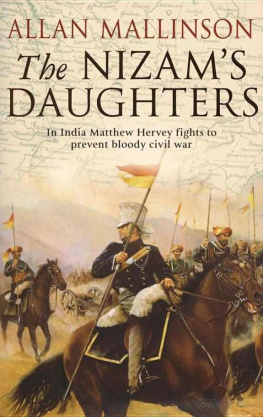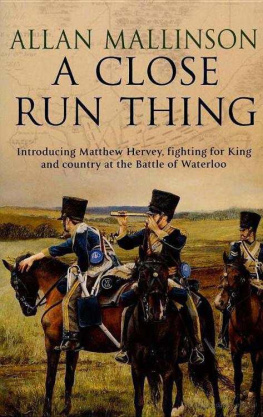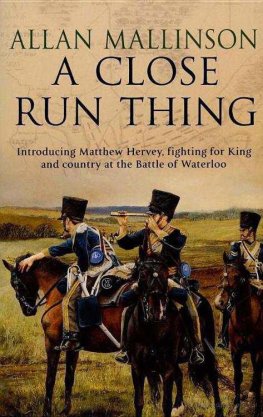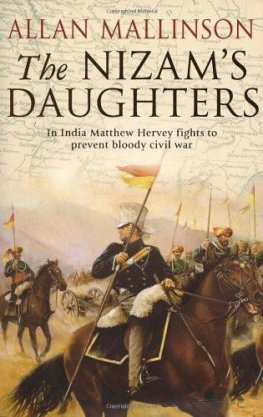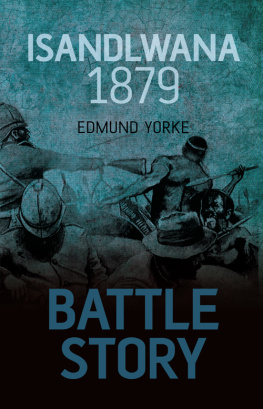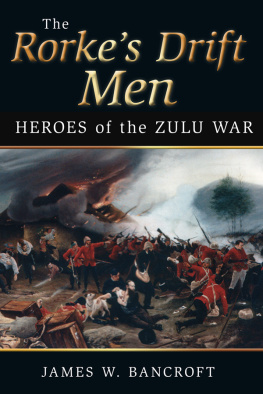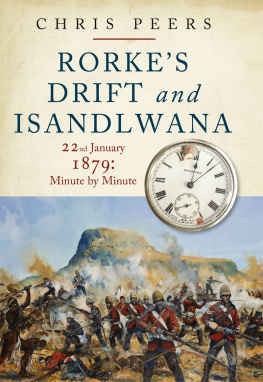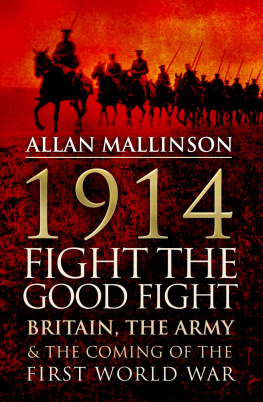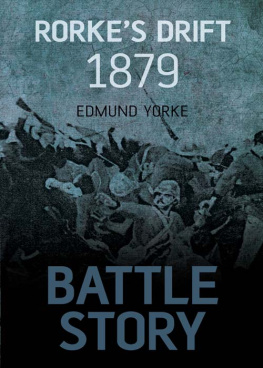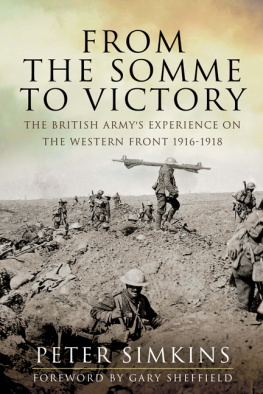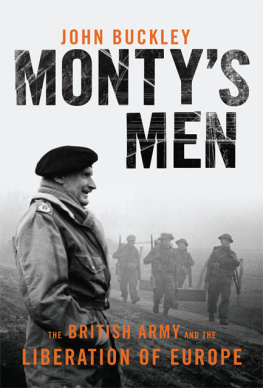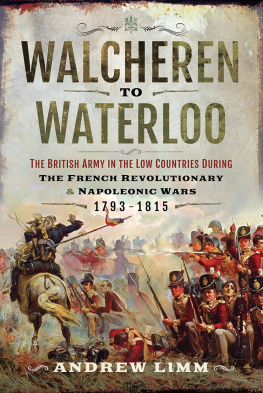The Making of the
British Army
Allan Mallinson

This eBook is copyright material and must not be copied, reproduced, transferred, distributed, leased, licensed or publicly performed or used in any way except as specifically permitted in writing by the publishers, as allowed under the terms and conditions under which it was purchased or as strictly permitted by applicable copyright law. Any unauthorised distribution or use of this text may be a direct infringement of the authors and publishers rights and those responsible may be liable in law accordingly.
Version 1.0
Epub ISBN 9781409085812
www.randomhouse.co.uk
TRANSWORLD PUBLISHERS
6163 Uxbridge Road, London W5 5SA
A Random House Group Company
www.rbooks.co.uk
First published in Great Britain in 2009 by Bantam Press an imprint of Transworld Publishers
This updated edition published in Great Britain in 2010 by Bantam Press an imprint of Transworld Publishers
Copyright Allan Mallinson 2009, 2010
Allan Mallinson has asserted his right under the Copyright, Designs and Patents Act 1988 to be identified as the author of this work.
A CIP catalogue record for this book is available from the British Library.
ISBN 9780593064306
This book is sold subject to the condition that it shall not, by way of trade or otherwise, be lent, resold, hired out, or otherwise circulated without the publishers prior consent in any form of binding or cover other than that in which it is published and without a similar condition, including this condition, being imposed on the subsequent purchaser.
Addresses for Random House Group Ltd companies outside the UK can be found at: www.randomhouse.co.uk The Random House Group Ltd Reg. No. 954009
The Random House Group Limited supports the Forest Stewardship Council (FSC), the leading international forest-certification organization. All our titles that are printed on Greenpeace-approved FSC-certified paper carry the FSC logo. Our paper procurement policy can be found at www.rbooks.co.uk/environment
Typeset in 11.5/14 pt Minion by Falcon Oast Graphic Art Ltd Printed and bound in Great Britain by CPI Mackays, Chatham, ME5 8TD
2 4 6 8 10 9 7 5 3 1
Every effort has been made to obtain the necessary permissions with reference to copyright material, both illustrative and quoted. We apologize for any omissions in this respect and will be pleased to make the appropriate acknowledgements in any future edition.

Contents
To
SUE
a soldiers wife who followed the drum
and
from German lodgings or Roman villa
made a home
And in gratitude to
Sir John Keegan,
who taught a great many of us their history
Reviews for
The Making Of The British Army
A romantic history of the British Army that stirs the blood.
Charles Moore, Daily Telegraph
An important book, because it shows how history has not just shaped the Army, its traditions and its ethos, but also how it has formed British strategy, for better and for worse.
Antony Beevor, The Times
Lucid, absorbing Mallinson combines a professionals feel for his subject with a populist touch.
Christopher Sylvester, Daily Express
Fascinating clear and concise important. It is hard to see this book being bettered in the near future.
Simon Heffer, Daily Telegraph
A compelling history of the British Army.
Emmanuelle Smith, FT
Thought-provoking and endlessly entertaining.
Trevor Royal, The Herald (Scotland)
Whether he is unpicking the close stitching of a battle or lyricising the hero of the book, the common soldier, his touch and judgment are compelling.
David Edelsten, The Field
Mallinson is surely right to stress the one enduring quality of the British Army: operational resilience.
Saul David, Spectator
An admirable introduction to an always controversial subject.
M R D Foot, Literary Review
www.rbooks.co.uk
Maps
Illustrations
Introduction
All civilizations owe their origins to the warrior; their cultures nurture the warriors who defend them, and the differences between them will make those of one very different in externals from those of another.
Sir John Keegan, A History of Warfare
I came to write this book first and foremost as a soldier of thirty-five years. How and why my army had become what it was extraordinarily capable in spite of its small size occupied me more and more. A soldier lives daily with his heritage the uniforms, the pictures on the walls, the names of things, how people talk, what they do, and how they do it; never more so than on operations. And when you live with your history day in, day out, for thirty-five years you begin to see it in a different way from what is sometimes written in the history books, for certain things gain in significance, while others become mere noise. So I began jobbing back into history to try to understand what it was in our past that made us tick today. And when I made a link in the past I found that it immediately demanded I reach back even further, for there was never the equivalent of a military big bang when suddenly the elements of the army were created. Indeed, even in the mists of the Dark Ages there are things that resonate in the modern army. Certainly I cannot believe that, say, Alfreds victory over the Danes at Ethandune on the downs overlooking the present-day battle-training area of Salisbury Plain is entirely unconnected with the spirit of that training.
So where to begin the story of the making of the British army? The Anglo-Saxon fyrd was a levy of free farmers assembled for a definite and short period, for the crops had to be sown and the harvest gathered. The Vikings with whom they battled were no better trained, however. The Normans were altogether better organized, but a single Roman legion would have routed William at Hastings, as it would any of the medieval peasant armies that fought in the Wars of the Roses, or the innumerable clan wars north of the border. Henry Vs magnificent longbowmen would have found the Roman testudo hard to crack. And even gunpowder would not have dismayed a legion too much before the end of the sixteenth century, for muskets and artillery were then crude and cumbersome. The point was that Roman soldiers were professionals: the legions trained full-time. For twelve hundred years and more, neither England nor Scotland had a standing army; and without a standing army there could be no continuity. So a study of the British army is therefore best begun at the point from which there is unbroken continuity: the seventeenth century, at the restoration of Charles II to the thrones of England and Scotland, when events at last forced a standing army on the nation.
The next question is what to leave out, which almost every soldier I have spoken to about the book has asked. In a way everything matters, and the army has seen so much action. Conversely, however, it has never been monolithic: what happened in one part of the army, in one regiment perhaps, dramatic though it may have been, did not always change the overall picture. What matters are those people and events in the past that have made the army what it is today an army emerging from a long and bruising campaign in Iraq, and fighting another in Afghanistan. I am not writing


